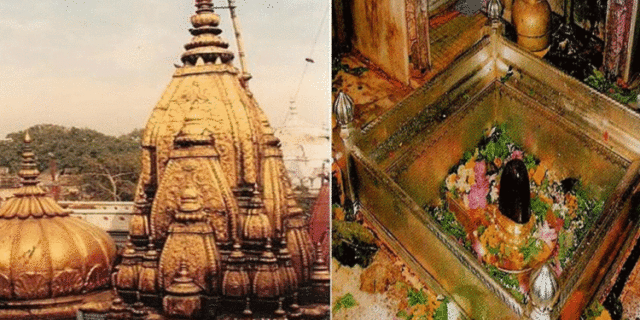A Varanasi court on Thursday requested an archeological study of the Kashi Vishwanath sanctuary and the Gyanvapi mosque premises, to find an answer to a waiting question including the two hallowed places.
The request was given by a senior division common court on a supplication forthcoming in 2019, solicitor counsel Vijay Shankar Rastogi.
What Was The Response to The Request?
Responding to the Varanasi court request, UP Sunni Central Waqf Board in Lucknow said that it will challenge the subordinate court, in the Allahabad High Court.
In his request, a senior common appointed authority of the most optimized plan of attack court in Varanasi asked the Uttar Pradesh government to get analyzed the contested premises by a five-part group of the Archeological Survey of India, at their own expense.

The court likewise specified that in any event, two individuals from the five-part group of famous archeologists ought to be from the minority local area.
The court provided this request on a supplication recorded by Rastogi as the ‘following companion’ of oneself existing Lord Vishweshvar Kashi Vishwanath, in the divinity’s status as a ‘legitimate individual’ under the teaching of lawful fiction.
Also Read: This Is the Solution To The Ram Mandir- Babri Masjid Dispute
As per this lawful teaching, non-living elements including banks, partnerships, and even gods, yet not mosques or temple, dared to be living people, for adjudication of any matter involving them, and such entities are represented in the court by what is known as their “next companion”.

Is The Survey Required?
Rastogi in his supplication, fought, that the Gyanvapi Mosque in Varanasi is a piece of Vishveshwar Temple and that the court has requested an ASI study of the contested territory between the two sanctuaries on this request.
Hours after the Varanasi court gave its decision, Sunni Central Waqf Board executive Zufar Ahmad Farooqui in an articulation said the subordinate court request will be tested in the high court.
“Our agreement is evident that this case is banished by the Places of Worship (Special Provisions) Act, 1991. The Places of Worship Act was maintained by a five-judge Constitution Bench of the Supreme Court in the Ayodhya judgment,” Farooqui said. The situation with Gyanvapi Masjid is, thus, undoubted, he attested.
Indeed, even else, we can say that according to the lawful exhortation that the request for the study is sketchy in light of the fact that specialized proof can just enhance certain basic realities.
No proof has been created under the steady gaze of the court that proposes that there was an earlier existing sanctuary at the site of the mosque.

Mosque Vs Temple Again?
Indeed, even in the Ayodhya judgment, the ASI uncovering was at last of no utilization, the Sunni Central Waqf Board administrator said, that the ASI didn’t track down any confirmation that the Babri Masjid was worked after the destruction of a sanctuary.
“The Supreme Court has explicitly seen that there was no such proof, and this act of mosques being ‘examined’ by the ASI must be halted” Farooqui added.
Image Credit: Google Images
Sources: Economic Times, BussinessToday, News18
Find The Blogger: @saba_kaila0801
This post is tagged under Religious Dispute, Temple, Mosque, Varanasi, ASI, Allahbad Court, High Court, Judiciary, Legislation, Government, Secrecy, Sunni Board, Archeological Survey Of India, Uttar Pradesh, Kashi Vishwanath Temple, Hinduism, Islam, Gyanvapi Mosque, Lalit Ghats, Yogi Adithanath Government, Law, 1991-92 Law, Special Provisions Act, Worship Places
Other Recommendations:
Ram Mandir Babri Masjid Hearing: What I Saw In Court Today (In Pics)






























